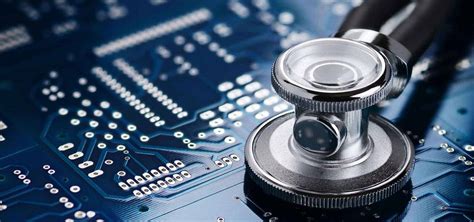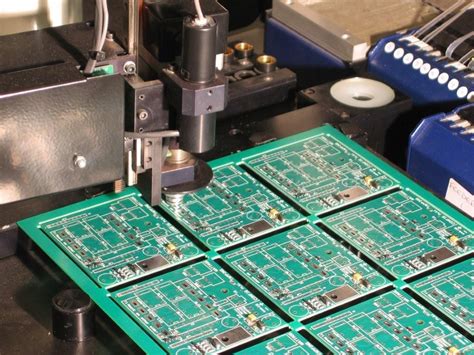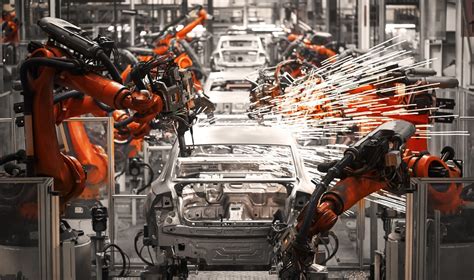Innovations in Flex PCB Assembly for Advanced Electronics Solutions

Key Takeaways
The evolution of flex PCB assembly has significantly influenced the landscape of modern electronics. As industries demand more compact and versatile solutions, the advancements in pcb assembly are adapting to meet these challenges. With the increasing complexity of electronic devices, the integration of flexible circuitry allows for enhanced design freedom, enabling engineers to create innovative products that were previously unfeasible.
Recent developments in pcba techniques focus on precision and efficiency, reducing production times while maintaining high standards of quality. Notably, advances in soldering methods, such as laser soldering and robotic placement, are pushing the boundaries of what can be achieved in flexible circuit design.
| Feature | Traditional PCB Assembly | Flex PCB Assembly |
|---|---|---|
| Flexibility | Low | High |
| Weight | Heavier | Lighter |
| Design Complexity | Limited | Extensive |
| Application Scope | Rigid | Dynamic |
Furthermore, as these technologies evolve, it is essential to embrace materials that enhance durability and performance. The use of high-performance substrates and advanced encasements can potentially mitigate issues such as strain relief and environmental exposure.
"Innovation in flex PCB technology is transforming how we approach electronics, enabling solutions that offer both efficiency and reliability."
This fusion of innovative techniques and materials is paving the way for applications across various sectors including medical devices, automotive systems, and wearable technology. The emphasis on reliability—coupled with a commitment to performance—positions flex PCBs as integral components in the development of tomorrow’s electronics solutions.

Introduction to Flex PCB Assembly: A Game Changer in Electronics
The world of electronics is evolving rapidly, and flex PCB assembly stands at the forefront of this transformation, providing innovative solutions that meet the demands of increasingly sophisticated technologies. Unlike traditional circuit boards, flexible PCBs can be bent and shaped to fit within compact enclosures, making them ideal for space-constrained designs. The ability to implement pcba techniques in flexible circuitry not only simplifies designs but also enhances the overall functionality of electronic devices. Flex PCBs incorporate advanced layering techniques, facilitating the integration of components in a more efficient manner, thereby reducing overall size and weight. Additionally, these flexible circuit boards can be produced using cutting-edge materials that improve their durability and reliability, making them suitable for a variety of high-performance applications, from wearables to aerospace technology. As industries increasingly adopt this innovative approach to pcb assembly, it is clear that flex PCB technology will continue to serve as a critical component driving the future evolution of advanced electronics solutions.
Cutting-Edge Techniques in Flex PCB Manufacturing
The manufacturing of flexible printed circuit boards (PCBs) has evolved significantly, driven by the demand for advanced electronics that require not only robust performance but also compact design. One of the most notable techniques being employed in flex PCB assembly is the implementation of laser cutting, which allows for precision fabrication that traditional methods cannot achieve. This technique enhances accuracy in cutting complex shapes and layers, which is crucial for the intricate designs found in modern electronics. Additionally, advances in adhesive technology have facilitated stronger and more reliable connections in these assemblies, improving their longevity and operational performance. The integration of surface mount technology (SMT) further enhances the versatility of these boards by allowing components to be mounted directly onto both sides of the flexible substrate, optimizing space and functionality. Furthermore, advancements in high-density interconnect (HDI) technology have led to a significant reduction in the size and weight of PCBs while maintaining high-performance standards. As manufacturers continue to explore these state-of-the-art techniques, the pcba process will undoubtedly witness an escalation in efficiency and effectiveness, ultimately providing solutions that meet the sophisticated requirements of various industries. The combination of these innovations not only marks a transformative phase in flex PCB manufacturing but also sets a solid foundation for future advancements in flexible circuitry.
Advanced Materials Driving Flex PCB Innovations
The realm of flex PCB assembly has experienced a remarkable transformation in recent years, primarily due to innovations in advanced materials that enhance performance, durability, and functionality. One of the pivotal materials contributing to this evolution is polyimide, which offers exceptional thermal stability and flexibility, making it ideal for complex circuit designs. Additionally, liquid crystal polymers (LCP) are gaining traction for their excellent dielectric properties and resistance to moisture, which further enriches the reliability of pcba processes. The integration of conductive inks and embedded components into these advanced materials has allowed manufacturers to create thinner, lighter, and more efficient circuits. Furthermore, the emergence of biodegradable materials is setting new benchmarks for environmental sustainability within the electronic industry. By leveraging these cutting-edge materials, organizations are not only improving their designs but also responding to the demand for more sustainable and adaptable electronic solutions. The innovative use of these advanced materials in flexible circuitry not only propels functionality but also ensures that products meet the intricacies of modern electronics landscape while significantly enhancing the overall performance and longevity of electronic devices.
Applications of Flex PCBs Across Various Industries
Flex PCBs, also known as flexible printed circuit boards, have emerged as a pivotal component in several industries due to their unique versatility and adaptability. Their ability to bend, twist, and conform to various shapes allows for innovative design opportunities that traditional rigid PCBs cannot offer. In the consumer electronics sector, flex PCBs are commonly found in smartphones, wearables, and tablets, contributing to thinner designs without sacrificing functionality. In the automotive industry, the integration of flex PCB assembly enables advanced features such as smart sensors and LED displays that improve user experiences and vehicle safety. Moreover, in medical devices, flexible circuits ensure reliable performance in compact spaces while accommodating the complexities of modern healthcare technology. This adaptability is crucial for devices such as portable diagnostic tools and implantable hardware. Furthermore, industries focused on industrial automation and aerospace also leverage flex PCB technology for improved performance and durability under demanding conditions. The continuous innovation in pcb assembly techniques enhances the reliability of these flexible circuits, making them indispensable across a growing array of applications. As a result, the future for flex PCBs looks exceptionally bright, with ongoing advancements set to unlock even more possibilities within diverse sectors.
Enhancing Performance: Reliability in Flexible Circuitry
The realm of flex PCB assembly is pivotal in creating flexible electronics that meet the ever-evolving demands of technology. In this context, the reliability of these circuits is paramount, underpinning their performance across various applications. PCB assembly processes have evolved to incorporate advanced techniques that ensure robustness and longevity. By utilizing materials with superior mechanical properties, manufacturers enhance the durability of pcba systems, allowing them to withstand rigorous conditions without compromising functionality. This quest for reliability often integrates multilayer flex designs that minimize stress points and reduce failure rates. Moreover, innovations in surface finishes improve solderability and resistance to environmental factors, ultimately strengthening the integrity of the electrical connections. As industries increasingly adopt flex PCBs, ensuring reliability becomes essential not just for meeting current standards but also for paving the way toward future technological advancements. The continuous refinement of flex PCB assembly methods serves as a testament to the commitment to delivering high-performance electronic solutions that can adapt seamlessly across diverse sectors such as consumer electronics, automotive, and medical devices.

Future Trends in Flex PCB Design and Production
As the demand for more compact and efficient electronic solutions continues to rise, the flex PCB assembly sector is poised for transformative innovations. The increasing integration of advanced technologies such as IoT, wearable devices, and automotive electronics drives the need for flexible, lightweight circuitry. Future trends in pcb assembly will likely focus on enhancing design methodologies that allow for greater customizability and scalability. Additionally, the adoption of advanced manufacturing processes, like 3D printing and laser cutting, will facilitate more intricate designs. These processes will enable engineers to create pcba that can accommodate intricate layouts with reduced manufacturing times. Moreover, the utilization of sustainable materials is expected to play a crucial role in future developments; adopting eco-friendly substrates not only enhances performance but also aligns with growing environmental considerations. The shift towards automation in production lines promises increased accuracy and cost-effectiveness while also shortening turnaround times. Ultimately, these advancements in flex PCB design are anticipated to open new avenues for applications across various industries, including healthcare and telecommunications, by delivering more reliable and efficient electronic solutions.

Case Studies: Successful Implementations of Flex PCBs
In recent years, flex PCB assembly has emerged as a pivotal technology in the field of electronics, leading to successful implementations across various industry sectors. A prominent example can be found in the medical device industry, where the use of flexible printed circuits allows for reduced space in devices while enhancing functionality. One company successfully integrated pcba into wearable health monitoring devices, enabling real-time data transmission without compromising comfort or usability. Another notable case is in the automotive sector, where flex PCBs are being utilized for complex sensor systems. These systems require reliability and precision, attributes inherently supported by advanced pcb assembly techniques. The ability to create circuits that can bend and withstand harsh environments ensures their effectiveness in safety-critical applications. Additionally, the consumer electronics market has seen flexible PCBs revolutionizing product design: smartphones and portable gaming devices benefit from their lightweight and adaptable nature, ultimately improving user experience. These case studies illustrate not only the versatility of flex PCBs but also their transformative impact on modern technology solutions across industries, setting a benchmark for future innovations in electronic circuitry.
Conclusion: The Road Ahead for Flexible Electronics Solutions
As we look towards the future of flex PCB assembly, it is clear that the innovations in pcb assembly techniques and materials are set to revolutionize numerous sectors. The potential for enhanced performance and reliability in electronic devices cannot be overstated. With the increasing demand for smaller, lighter, and more efficient electronic components, the advancements in flex PCB technology are poised to meet these needs effectively. Emerging techniques such as high-density interconnects and improved soldering methods are not only streamlining the PCBA process but also expanding the possibilities of flexible circuitry applications.
Further, the integration of smart materials in flex PCB assembly promises to enhance functionality while maintaining versatility. As industries from consumer electronics to aerospace continue to adopt these technologies, we can anticipate a surge in tailored solutions that leverage flexible circuits’ unique properties. The collective journey toward innovative electronic solutions underscores the importance of ongoing research and development in this field. As we embrace this technological transformation, it is imperative to remain focused on providing sustainable, scalable, and high-performance designs that will shape the landscape of electronics for years to come.
Conclusion: The Road Ahead for Flexible Electronics Solutions
As the demand for innovative electronic solutions continues to grow, the importance of flex PCB assembly (PCBA) becomes increasingly evident. These flexible circuit boards are paving the way for advancements across multiple industries, from consumer electronics to automotive applications. The evolution of flex PCB assembly techniques and materials is driving unprecedented levels of performance and reliability in electronic devices. Companies are adopting cutting-edge methods that enhance the durability and functionality of their products while reducing size and weight. Moreover, as industries seek to innovate, the use of advanced materials in pcb assembly is enabling engineers to design more complex and efficient circuits that were once thought impossible. Looking ahead, we can anticipate further integration of superior technologies into flex PCB assemblies, which will ultimately lead to more robust electronic solutions that can meet the challenges of an ever-changing market landscape. The potential for pcba is vast, suggesting a promising future for both manufacturers and consumers alike as we embrace these flexible electronics.
FAQs
What is flex PCB assembly?
Flex PCB assembly refers to the process of manufacturing circuit boards that can bend and flex, making them ideal for a variety of applications where space is limited and flexibility is important. PCB assembly typically involves placing electronic components onto flex PCBs, enabling the creation of compact and lightweight designs.
What are the advantages of flexible PCBs in electronics?
Flexible PCBs offer several advantages, including reduced weight, enhanced versatility in design, and improved reliability. With their ability to fit into tight spaces, flex PCBs can be used in innovative product designs across multiple industries such as consumer electronics, medical devices, and automotive systems.
How do advanced materials impact flex PCB manufacturing?
The development of new materials has significantly improved the performance of flex PCB assembly. Materials such as polyimide provide excellent thermal stability while also being lightweight. This advances not only the performance but also the lifespan of electronic solutions assembled using these flexible boards.
What industries benefit from flexible PCB applications?
Flexible PCBs are increasingly used in various sectors including telecommunications, aerospace, healthcare, and automotive technology. Their ability to conform to intricate shapes allows for more efficient designs in devices ranging from smartphones to wearable technology.
How do cutting-edge techniques enhance flex PCB production?
Recent innovations in techniques such as laser cutting and advanced printing methods help optimize PCBA, resulting in higher precision and efficiency during manufacturing. These improvements contribute to lower costs and faster production times while maintaining high standards for quality and reliability.
For more information about PCB assembly, please click here: Andwin PCB Assembly.







